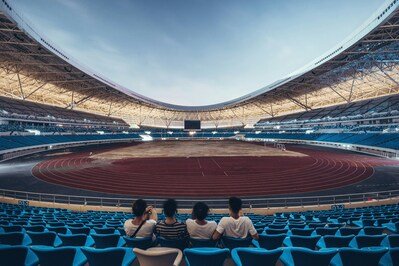Behind the electrifying goals, roaring fans, and high-stakes drama of every sports event lies a complex web of logistics that few spectators ever see. From grassroots competitions to international championships, organizing a successful sports event requires meticulous planning, coordination, and a reliable network of suppliers and transport solutions. Without this unseen infrastructure, even the most anticipated matches would grind to a halt.
Transporting Equipment and Infrastructure
Whether it’s a local marathon or the Olympic Games, transporting equipment is one of the most crucial aspects of sports event logistics. Stadiums need goalposts, nets, lighting rigs, video screens, and crowd barriers. Athletes require training gear, uniforms, and personal equipment. Broadcasting teams haul in tons of cables, cameras, and control units. Moving all this efficiently from one venue to another, sometimes across countries or continents, is no small feat.
For smaller or non-mainstream events, organizers often rely on third-party logistics platforms like Shiply shipping services to connect with transport providers who can handle specialized or last-minute deliveries. Such platforms help event planners find cost-effective and flexible solutions for moving anything from kayaks and javelins to scoreboards and seating.
Venue Setup and Breakdown
Once the equipment arrives, setting up the venue is another herculean task. Temporary structures like tents, food stalls, security checkpoints, and media centers must be installed and tested. This requires coordination among various teams, including riggers, electricians, safety inspectors, and IT specialists. Every inch of the venue is typically mapped out in advance to ensure optimal flow of participants and attendees.
Time is of the essence. Many sports venues host multiple events back to back, which means setup and breakdown must happen within tight timeframes, sometimes overnight. This necessitates precise scheduling, crew availability, and contingency planning to account for unexpected delays or changes in weather.
Team and Athlete Logistics
Ensuring that athletes and teams arrive safely, on time, and with all their gear is another major component. This involves booking transportation, accommodations, and meals tailored to strict dietary and performance needs. Elite athletes often travel with a small army of coaches, medical staff, and performance analysts. Each member of this team requires access to training spaces and recovery facilities.
In tournaments with multiple matches, like the FIFA World Cup or a tennis Grand Slam, there is the added challenge of ensuring smooth transitions between venues while maintaining peak performance. This means charter buses, advance luggage delivery, and mobile medical units may all be part of the equation.
Crowd and Traffic Management
Hosting tens of thousands of fans also calls for robust logistics. Security, ticketing, parking, sanitation, and emergency services must all be coordinated. This includes detailed traffic flow models to avoid congestion and ensure safe evacuation in emergencies.
For mega-events, cities often upgrade public infrastructure, coordinate with transit authorities, and implement real-time communication systems to manage crowd behavior. The failure to plan these aspects thoroughly can result in long queues, delays, or even dangerous overcrowding.
To Sum Up
While athletes and fans take center stage during a sporting event, the real victory often lies in the seamless execution of the logistics behind the scenes. Every delivery, schedule, and setup contributes to the experience. Certain shipping services play a key role in ensuring the smooth transport of essential equipment and infrastructure, proving that when it comes to sports, the real action starts long before the first whistle blows.
